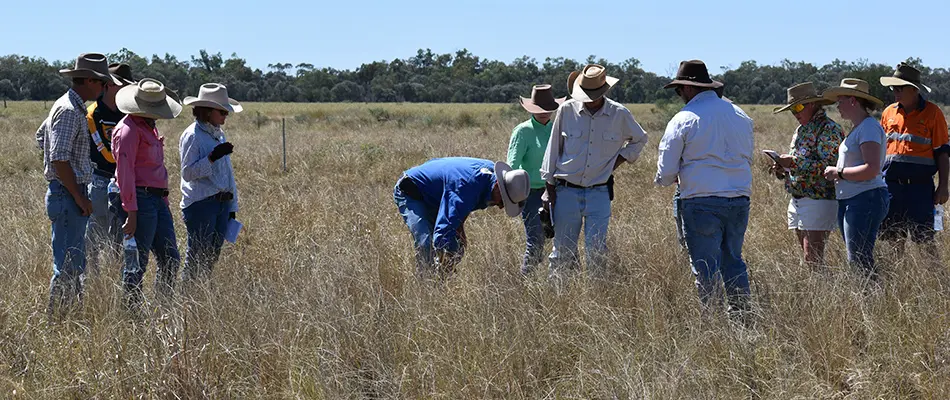Graziers working to nurture remnant brigalow patches
Graziers in the Northern Brigalow Belt region, near Mt Coolon, Glenden and Moranbah, have been working to improve the condition and extent of small remnant brigalow patches, with the grazing enterprise in mind.
Strategies have included protecting regrowth within the brigalow corridors by managing pests and invasive weeds, fencing the brigalow sites, installing watering points to reduce the impact of fencing on stock, and managing grazing regimes.
Graziers helped design projects, and sites were monitored over the duration of the project. The Conserving Brigalow Corridors in the Burdekin project, funded from the Australian Government’s National Landcare Program, wraps up this month, June.
NQ Dry Tropics and graziers who participated in the project, hosted a field day to share results.
Dick Richardson, of Grazing Naturally, led a discussion on the key principles of the Grazing Naturally method, an approach that can be adapted to suit specific locations and grazing operations.
Topics included:
-
-
- Grazing management to increase forage and groundcover.
- Understanding groundcover variation across paddocks, and how to implement grazing practices to account for this.
- Matching stocking rate to carrying capacity.
- Soil building and the carbon cycle.
-
Dick also demonstrated the STAC method of forage budgeting.
The field day was held at Pasha Station, near Mt Coolon.

Grazing consultant Dick Richardson from Nature’s Equity delivered salient advice about how to improve a grassland biome with a targeted approach to grazing management in the field (above) and in the “classroom” (below).

Fauna surveys help brigalow corridors
Fauna surveys helped determine how best to protect brigalow corridors and endangered wildlife at no cost to grazing enterprises along Eaglefield Creek, near Moranbah.
NQ Dry Tropics partnered with NRA Environmental and Ecological Interpretations to assess the flora and fauna of brigalow sites using the Queensland Fauna Survey Guidelines. Detection and catching techniques used included Elliott traps, pitfall trapping, funnel traps, bird surveys, and targeted searches for various types of animals both day and night, to understand the faunal assemblage that occurs in brigalow.
This video explains those techniques, why and how they’re used, and shows the incredible array of fauna that was found on project sites.
An Eaglefield Creek Management Plan was developed to determine the best strategies for protecting the habitat and the endangered species of the brigalow while maintaining grazing production value.
Tackling parkinsonia infestation
A dense and widespread Parkinsonia infestation on Ruan Station, near Mt Coolon, has been treated by Di-Bak Parkinsonia, a biological herbicide.
A capsule containing a combination of naturally occurring fungal pathogens is injected into the trunk, inducing dieback disease to kill the plant. The fungus enters the root systems and can spread across dense infestations, causing a natural dieback that extends well-beyond the initial application of the fungus. The fungus does not impact any native species.
This method has been effectively used across northern Queensland, but this was the first use in the Burdekin dry tropics area. More than 4000 trees across 10 hectares were treated, and smaller nearby infestations were also treated through several aerial and basal bark herbicide applications over 181 hectares. NQ Dry Tropics partnered with Bioherbicides Australia and Jangga Traditional Owners to trial Di-Bak Parkinsonia.
This video shows how Parkinsonia was treated on the property.
ALSO IN THIS ISSUE:

